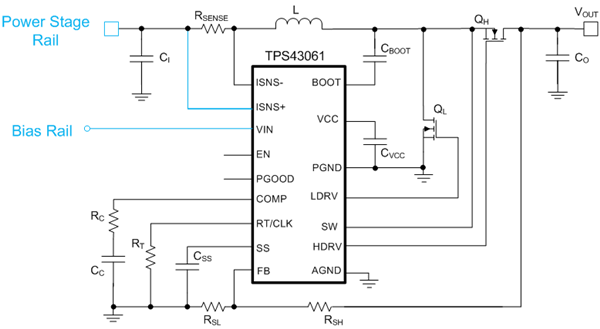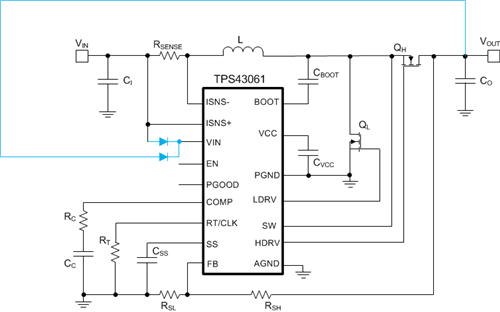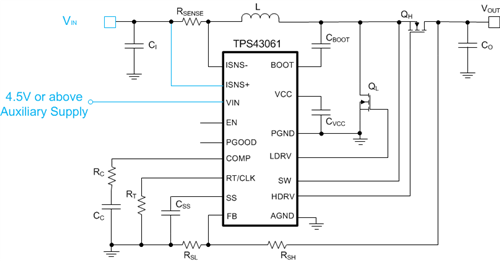SSZTAN7 november 2016 TPS43060 , TPS43061
I was recently reading an amusing article posted on The Telegraph titled “50 technological advances your children will laugh at.” It is incredible to see how quickly technology is changing, and how must-have gadgets from one decade become the big, clunky gadgets that kids start laughing at the next decade.
With the increasing number of electronics being powered off of lithium-ion (Li-ion) batteries, it is important to design an efficient and robust power supply. Just take a look around you: I am sure you have at least two or three electronic devices that are being powered off of a battery source. I recently got a new laptop computer and I am impressed with the sleek, compact design that still provides excellent battery life. However, you have to keep in mind that Li-ion batteries will constantly charge and discharge, which will affect the operation of other integrated circuits within the system.
Wide input voltage range DC/DC controllers usually have built-in undervoltage lockout (UVLO) circuits to prevent the converters from misoperating when the input voltage is below the UVLO threshold. In the event of a load transient or a supercapacitor discharging, the input voltage may drop below the UVLO threshold, causing an undesirable shutdown of the system. Furthermore, these controllers generally cannot be used in applications where the input voltage is always lower than the UVLO threshold. You can consider a split-rail approach to extend the boost converter’s input voltage range, however, enabling the use of these controllers in applications where the input voltage is lower than the UVLO threshold.
Texas Instruments’ TPS43060 and TPS43061 low quiescent current synchronous boost DC/DC controllers with wide input voltage ranges are used commonly across 5V, 12V and 24VDC bus power systems. Synchronous rectification and a compact 3mm-by-3mm 16-pin solution enable high efficiency and high power density for high-current applications. The TPS43061 is an example of a boost controller that can support a split-rail configuration. As shown in Figure 1, the input supply to the boost converter can split into two rails: the power-stage input rail and the controller’s bias input rail. The power-stage rail is the input to the boost converter for power conversion. The bias input rail is used to power the controller itself, which can be an additional auxiliary supply or derived from the output. With the split-rail configuration, the TPS43061 can support an input as low as 1.9V.
 Figure 1 Split-rail
Configuration
Figure 1 Split-rail
ConfigurationIn some applications with only one input supply, the input supply voltage may be greater than the UVLO turn-on threshold at startup but may fall below the range afterwards, causing an undesirable shutdown. One example is a power system using a photovoltaic panel combined with a supercapacitor as an input supply; the input voltage may drop below the UVLO threshold due to the discharging capacitor. For this type of application, if the output voltage is within the bias input specification range (or, in other words, if VOUT is greater than the UVLO turn-on threshold), then VOUT can be fed back as the bias supply through a diode, as shown in Figure 2.
 Figure 2 VIN Biased from
vOUT Of TPS43061
Figure 2 VIN Biased from
vOUT Of TPS43061With Li-ion batteries used across several applications such as smartphones, tablets and laptop computers, the voltage of a single-cell Li-ion battery can range from 2.7V to 4.2V due to discharge and charge. For these applications, you need a separate bias supply other than the battery input. As shown in Figure 3, a 4.5V or higher source connected to the bias rail can power on the controller. Since the bias supply needs to supply low voltage, you can connect another supply rail within the system above the UVLO turn-on threshold to the bias rail. Another approach is to add a charge pump that can produce the bias voltage.
 Figure 3 VIN Biased from an
Additional Supply
Figure 3 VIN Biased from an
Additional SupplyA split-rail approach separates the power rail from the bias supply rail to eliminate the constraint on the minimum operating voltage of the power rail. By extending the input voltage range of the boost controller, you’ll have more time to design the next must-have gadget. Read the complete article on the topic “Extend the input-voltage range of boost controllers” by Haifeng Fan and consider TI’s TPS43060 and TPS43061 low quiescent current synchronous boost DC/DC controllers for your next split-rail design.